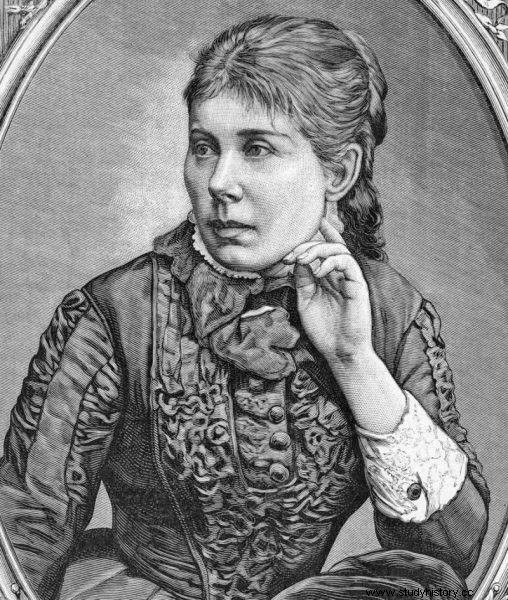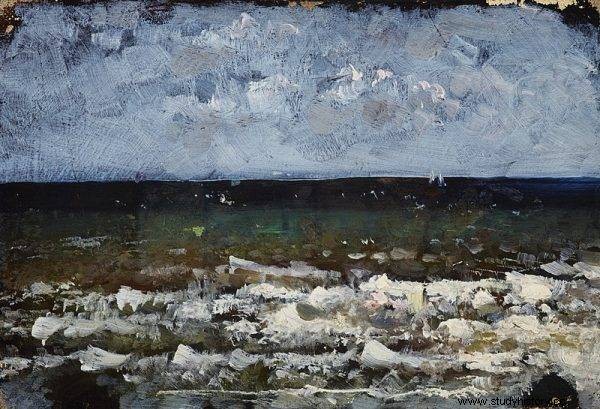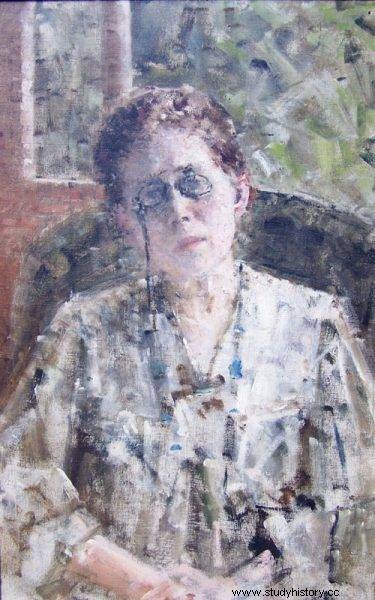Maria Konopnicka and Maria Dulębianka have spent over 20 years together, living and traveling together. Friends, soul mates, or maybe… lovers?
A young painter, a feminist with short hair, in men's clothes and almost two decades older, a respected author, married and mother in dresses and hats with flowers. Until recently, Maria Dulębianka, although known in artistic and feminist circles, was neglected as a person inseparable from the biography of Maria Konopnicka. Created by the poet herself, and cultivated by later generations, the "bronze" image without the slightest scratch would not have endured a scandal.
Even today information that Konopnicka could have been a non-heteronormative person meets with indignation and protests. There are voices about "chasing the poet's holy name". Eager defenders argue that the relationship between the two ladies was certainly a mother-daughter or master-apprentice relationship. However, some researchers believe otherwise.
Inseparable friends
The painter Maria Dulębianka is sometimes called the "pioneer of feminism". She came from a family of landowners and, like all the girls in her sphere, she completed a salary for maidens. This is where the path followed by her peers ended. Instead of getting married well and having children, she decided to devote herself to art. Initially, she studied with the master Jan Matejko himself. Then she left for Paris (The Krakow School of Fine Arts did not accept women at that time). Then she perfected her workshop in Vienna under the supervision of Horowitz and in Warsaw with Wojciech Gerson, who was said to have "given impetus to female painting".

Were Maria Konopnicka and Maria Dulębianka in a lesbian relationship?
Her painting For the poet's thought , exhibited at the Warsaw Exhibition of the Society for the Encouragement of Fine Arts made an impression on young Stefan Żeromski, who wrote in journals on May 17, 1888:
We were then at the T.Z.S.P. I was struck by only one new and beautiful thing - "In the thought of the poet" Dulębianka. This is one of the best things a woman can create. […] There is in it that finger bending to the nerve of feelings that they know and can feel, and at the same time only women can reproduce. [...] Dulębianka has an artistic psychology and painting technique that should lead her to the high level of art.
Interestingly, the writer also noted that the picture described was on par with Konopnicka's songs. At that time, a friendship was being born between the two ladies, who probably met at the turn of the 1870s and 1880s. Both attended the women's science reading room run by Paulina Kuczalska-Reinschmit.
Pietrek with rubbed elbows
In 1888 Maria Konopnicka was in her forties, gave birth to eight children and separated from her husband. Did she get involved with Dulębianka right away? It can be assumed that initially they were united by a stronger and stronger friendship, although some saw something more in their relationship . In an unpublished fragment of Romanana Pachucka's diaries, disclosed by Agata Zawiszewska in recent years, an activist from the beginning of the 20th century describes the women's relationships she knows in this way:
I knew three pairs of women at the time, inseparable friends:I Paulina Kuczalska-Reinschmit and Józefa Bojanowska, II Maria Konopnicka and Maria Dulębianka, III Helena Weychert and Maria Rodziewiczówna. In each of these two, one became externally male […].
Maria Dulębianka wore short hair that freely framed her high forehead and fell over the back of her head. The "potato beetle", or eyeglasses, pinched her nose and covered the eyes of the short-sighted. Slender and slim, she also dressed in English cut costumes, and was enlivened by a bright vest with a collar and tie, often black, tied in a bow at the neck. She wore low-heeled shoes, and her movements and gait were vigorous, angular and male-like. By nature, Br. good, gentle and soft, on the outside she wanted to be kind to a man.
Konopnicka wore long, elegant dresses and hats, often decorated with flowers. Therefore, according to Krzysztof Tomasik, her relationship with a friend whom she called "Piotrek" or "Pietrek with rubbed elbows" could have an erotic dimension:> . It is a lesbian relationship based on the division of roles into male and female. On the other hand, Dulębianka could simply manifest emancipation and feminist views with her clothes and way of being.
Peculiar mood and backstage gossip
Whatever the case, she was such an important person for Konopnicka that the writer took her in 1899 for a "family reunion" organized in Arkadia. She always used the plural in her letters to describe the events of her life and her life together. As Tomasik writes: "In letters to children, the author of Roty did not explain or comment on her appearance, she just went from singular to plural at some point , writing:we have, we decided, we visited, we are going ”.

The relationship with Konopnicka had a negative impact on the artistic work of Dulębianka
On September 8, the women moved into the manor house in Żarnowiec, near Krosno, received by Konopnicka "as a gift from the Polish nation". If they went anywhere, practically always together. The relationship with Konopnicka had a negative impact on the artistic work of Dulębianka, who largely sacrificed her own aspirations for the care of her friend. However, according to the biographer of the poet, Lena Magnone, erotic threads appeared in Konopnicka's work only after meeting Dulębianka. Only she could paint her. Certainly, the writer believed in her friend's talent and supported her by using her extensive influence and connections.
Dulębianka did not manage to involve Konopnicka in feminist activities. Although the writer was involved in many projects, she did so only at the request of her friend. During the jubilee of Eliza Orzeszkowa, combined with the nationwide convention of women in Warsaw in 1907, an unpleasant incident took place. Konopnicka, irritated by the behavior of the audience during Dulębianka's speech, left the room without a word. The official point was that during Dulębianka's speech, representatives of associations under the influence of national democracy disturbed the speaker with ironic remarks, laughter and protests. In Kurjer Warszawski of June 13, it was cautiously written that some of the audience "exhibited a peculiar mood, upsetting the speaker." In the backstage, it was said that the sharp remarks were not about political topics, but about the nature of the speaker-chairman's relationship.
Promiscuous Lesbian and Shot Feminist
Perhaps the nature of the relationship between Konopnicka and Dulębianka would remain in the sphere of guesswork and possible academic studies to this day, had it not been for the events of 2012. In the heat of the LGBT + milieus over the enactment of the law on civil unions, the matter came to the fore. The Director of the Book Institute, Grzegorz Gauden, appealed to the debating deputies to call the bill under preparation the Konopnicka-Dulębianka Act:
Maria Konopnicka and Maria Dulębianka have lived inseparably over twenty years. They lived together, traveled the world, fought for Poland and justice. They devoted their lives to it - literally Maria Dulębianka. The Poland of their dreams was to be a country of free people, working for their homeland, living in accordance with their personal choices and feelings. [...] Paying off the debt of several generations of Poles to Maria Konopnicka and Maria Dulębianka and fulfilling the dreams of both women, the Sejm of the Republic of Poland passed the act on partnerships.

Konopnicka's portrait by Dulębianka
It is not hard to guess that conservative circles have been in turmoil. Former right-wing MP Artur Zawisza wrote:" The thesis about the alleged lesbianism of Maria Konopnicka is a lie of feminist propaganda. The Konopnica lie could be punishable in the same way as the Auschwitz lie. In turn, Paweł Bukowski, senior curator and director of the Maria Konopnicka Museum in Żarnowiec, explained the whole scandal:“Someone wants to gain cheap popularity by looking for a sensation. Because it's easier to break through with it than with a scientific position. […] And by the way, we should look at its achievements. And not to look under the skirt. ”
In turn, Krzysztof Skiba in his column in "Wprost" mocked:"Krzysztof Tomasik in the book Homobiographies revealed that the author of the patriotic Rota and our hacks , mother of eight children, Maria Konopnicka was not as boring as it is commonly believed. Thanks to Tomasik, we already know that the poet who flutters on the banners of the heavy-right press is a dissolute lesbian who is pissing off her husband playing in bed with a shot feminist. ”
Until death do us part?
Conservative circles strongly opposed such an attempt to undermine Konopnicka's image. The aforementioned Paweł Bukowski argued that "If there were any doubts, John Paul II would not have referred to Konopnicka's works in his homilies". It is worth mentioning here that the first book of the writer, devoted to people of science persecuted by Christians, published in 1881 under the title From the past, caused a storm and comments similar to what an anonymous author published in the "Catholic Review": "Her thought is godless and blasphemous" . Konopnicka was critical of the Catholic Church and the Pope. In a letter to her daughter of February 12, 1897, she wrote:"Oh, rottenness, all these clones!"

Maria Konopnicka and Maria Dulębianka have lived inseparably over twenty years.
Apparently, the conflict with the Church was reminded of the writer over the coffin. When Konopnicka died in 1910, the clergy canceled the funeral. The speech of Bishop Bandurski was abandoned . However, this did not stop the ceremony from being completed. The speech was delivered by Jan Kasprowicz, who said that it was the writer's temporary resting place, because in the future she would rest on Skałka. Unfortunately this did not happen. When Maria Dulębianka died of typhus 9 years later, her funeral was accompanied by patriotic and social demonstrations, which Jarosław Molenda writes about in his book Scandals:
The funeral procession was followed by women, including those rejected by the morality and customs of that time, single mothers, children from shelters and nurseries. Dulębianka was almost a saint to them. The ceremony was also attended by veterans of the 1863 uprising, Lviv artistic and journalistic circles, and the Lviv magistrate headed by President Józef Neuman.
According to her wishes, Dulębianka's body was initially placed in the tomb where Konopnicka was buried. Unfortunately, they were not given eternal rest together. The painter's body was moved to the Eaglets' Cemetery, where she was buried next to the graves of the defenders of Lviv and participants of the fights for Eastern Lesser Poland.
Self-censorship
In this way, someone wanted to obliterate twenty years of common life of two women in the memory of posterity in order to defend the bronze image of one of them? We don't know that. Perhaps we will also not find out what really happened between them. We do know that Dulębianka never got married, we also have no sources about her relationship with another woman . We should also remember that Konopnicka used to keep silent and hide many feelings and truths about herself, since she wrote: "I even write to my loved ones so that they could be read by the gendarme, if he wanted to" .
In view of such meticulous censorship of the poet herself and her family, it is hard to expect that any documents will ever come out that could confirm the speculations that have been going on for a hundred years. What if not? Well, as Krzysztof Tomasik writes perversely - what would result from this? “It does not change the fact that the author of Imagina chose the woman as a companion in your life, and you can probably talk about a relationship in the case of people who live and travel together? " - asks the author. Let everyone answer this question for himself.
Bibliography:
- Gorczyca, E., Secrets of Maria Konopnicka's bedroom. Don't look under the poet's skirt! , nowiny24.pl (access:21/01/2022).
- Gauden, G., Preamble to the law on civil unions , October 12, 2012, Wybcza.pl (accessed January 21, 2022).
- Kienzler, I., Maria Konopnicka - a ravaged godlessness , Warsaw 2014.
- Dulębianka, M. , Ethics spokeswoman for social, economic, pedagogical and ethical matters, "Na station" 1919, No. 4.
- Magnone, L., Maria Konopnicka. Mirrors and symptoms , Gdańsk 2011.
- Molenda, J., Gorszycielki , Warsaw 2019.
- Szypowska, M., Konopnicka we do not know , Poznań 2014.
- Tomasik, K., Homobiographies. Polish writers and writers of the 19th and 20th centuries , Warsaw 2008.
